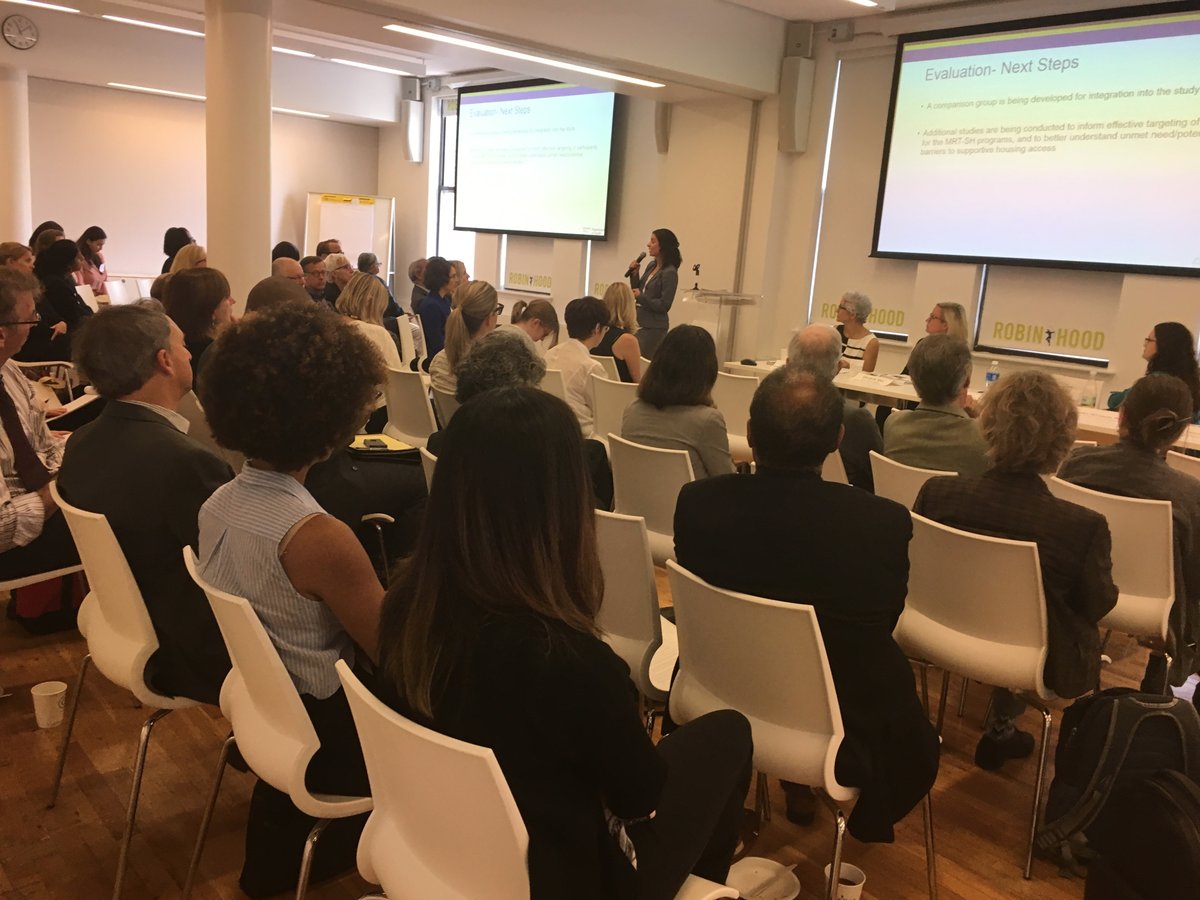Categories: New York State, Network Events
09.20.2017
A presentation at Robin Hood of first year evaluations.
 Panelists address the crowd at the presentation of the Medicaid Redesign Team Supportive Housing Program evaluations.
Panelists address the crowd at the presentation of the Medicaid Redesign Team Supportive Housing Program evaluations.
Some 70 representatives from a broad spectrum of health and housing organizations gathered at the offices of Robin Hood September 12th for a presentation on first year evaluations of the Medicaid Redesign Team Supportive Housing Program by representatives of the Department of Health (DOH) and SUNY Albany.
Welcomed by Robin Hood’s Managing Director for Health programs, Sarah Oltmans, the Network’s Laura Mascuch then framed the morning’s focus and introduced the presenters. She also summarized the Evaluation’s overall findings: that the programs reduced inpatient days by 40%; reduced emergency department visits by 26%; reduced rehab admissions by 44% and inpatient psych admissions by 27%; and reduced overall Medicaid spend by 15%.
DOH Deputy Medicaid Director Liz Misa kicked off the presentation by giving an overview of the MRT program, by far the largest investment in housing by any state health agency in the country. To date the program has invested $641 million over seven years; served 11,000 high need Medicaid recipients, developed 19 rental subsidy and supportive service programs statewide, added 1,482 units to the state’s supportive housing inventory and prioritized placements in single-site residences for the most vulnerable Medicaid recipients. Ms. Misa then showed a brief film created by BronxWorks in which tenants of their Health Home Supportive Housing Pilot Program described the impact of having stable housing. That program has produced a 46% reduction for the first seven participants for whom they have data, according to the Bronx Health and Housing Consortium.
The research team from SUNY Albany then took over, unpacking cost and utilization data from the tenants of 11 MRT housing-related programs. Dr. Lauren Polvere led off, describing the tenants in terms of their demographics, ethnicity and chronic conditions. Dr. Sandra McGinnis and Dr. Diane Dewar took attendees through the utilization and cost reports, paying special attention to two of the supportive housing programs that had the most robust outcomes in cost and utilization – scattered-site programs for high-need Medicaid recipients run by the Office of Alcohol and Substance Abuse Services (OASAS) and the Office of Mental Health.
Representatives from city and state government, MRT supportive housing, Managed Care Organizations, foundations and health care professionals then participated in an hour-long discussion of the results and proposed next steps. Presenters told attendees that additional studies are being conducted to inform effective targeting of participants for the MRT units as well as to better understand unmet need. Ms. Misa left open the possibility of expansion or creation of new programs depending on budget discussions.
We thank the presenters as well as our Robin Hood hosts for the opportunity to discuss this groundbreaking work.
